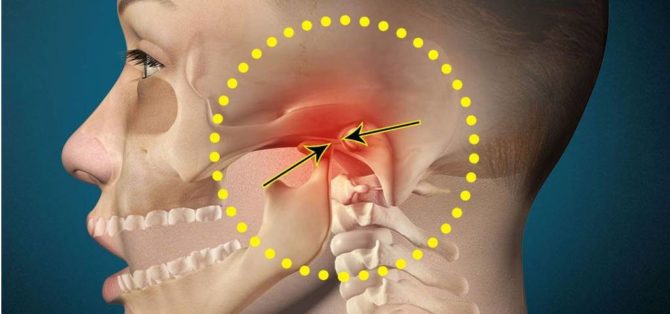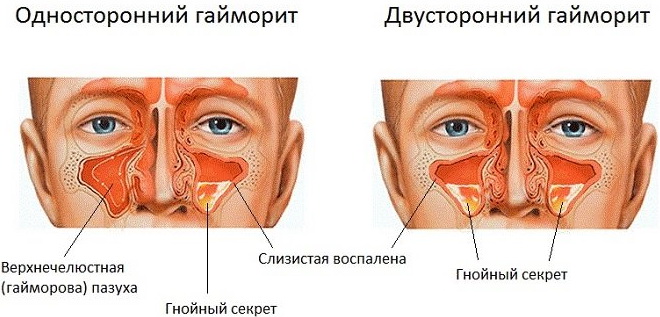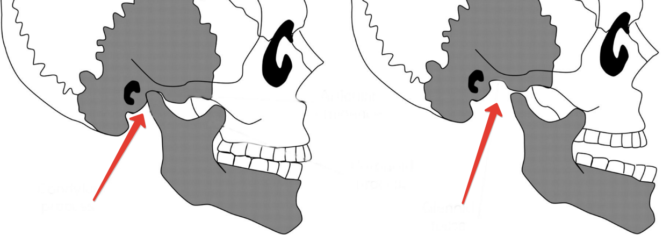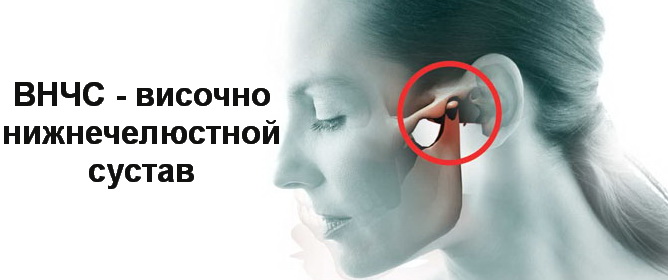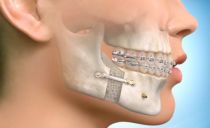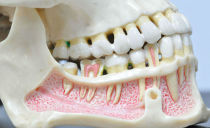Why does the jaw near the ear hurt from one or two sides, treatment options
The jaw can hurt near the ear on the right or left, it is usually painful for patients to chew and speak, sometimes pathology is accompanied by an increase in body temperature. Pain can occur only when pressed or at rest, to be burning or aching. There are many combinations of pain, and each indicates a specific lesion. Therefore, doctors first conduct a detailed survey of the patient, and after it they prescribe additional clinical and laboratory studies - MRI, radiography, and a general blood test.
Content
Which doctor should I contact if my jaw hurts near my ear
If you experience unpleasant sensations and pain in the area of the ear, cheekbone and jaw, you need to determine which doctor should seek advice. The disease that caused the pain in the jaw area can be treated by an otolaryngologist, surgeon or dentist:
- The surgeon is involved in the treatment of pain caused by a disease of the soft tissues of the face.
- If pain occurs as a result of inflammation of the lymph nodes, ears, sinuses, larynx or tonsils, infectious diseases, you need to consult an otolaryngologist.
- If the pain in the jaw near the ear, manifested during chewing, is caused by an inflammatory process in the gums or teeth, the dentist will help get rid of the pathology.
- Maxillofacial surgeons and dental surgeons specialize in the treatment of diseases of the temporomandibular joint, dentition, phlegmon and abscesses.
- Pain in the facial region can be caused by diseases of the peripheral nervous system. To identify inflammation or pathology of nerve fibers, you should consult a neurologist.
It is difficult to independently determine what caused the pain syndrome. You should make an appointment with a therapist who will study the clinical picture and redirect the patient to the right doctor.
If the jaw is sick sharply and very badly, you must immediately call an ambulance. Such symptoms may indicate a dislocation or even a fracture.
Why can the jaw near the ear hurt, depending on the location of the pain
Pain localized in the upper jaw can be triggered by sinusitis. The disease develops against the background of injuries to the skull and nose, prolonged hypothermia, pulpitis and periodontitis. Sinusitis can be determined by the following signs: nasal congestion (usually one nostril), separation of thick mucus or pus when blowing nose, nasal voice, increased body temperature.
The zone of maximum pain sensitivity is usually located near the nose, but in advanced cases the pain can spread to the entire face. Sometimes the disease affects the sinuses on both sides, but most often it is one-sided. If the patient has a jaw only near the ear on the left, and it does not hurt to chew on the right side, then inflammation develops in the sinuses located on the left.
And in the upper and lower jaw, pain occurs for such reasons:
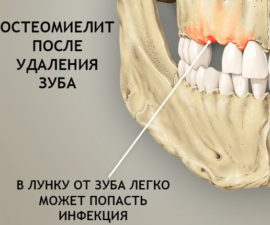 Osteomyelitis - inflammation of the jaw. It develops as a result of unprofessional treatment of sinusitis, tooth extraction, implant placement or sinus lift.The ailment is accompanied by an increase in temperature, the pain can slightly give to the left or right lower jaw.
Osteomyelitis - inflammation of the jaw. It develops as a result of unprofessional treatment of sinusitis, tooth extraction, implant placement or sinus lift.The ailment is accompanied by an increase in temperature, the pain can slightly give to the left or right lower jaw.- Gingivitis - The inflammatory process in the soft tissues of the gums. This disease is characterized by aching pain and bleeding gums. Additional symptoms are a slight increase in temperature and the appearance of bad breath.
- Alveolite - inflammation of the tooth hole after tooth extraction. The zone of painful innervation is small, the temperature is elevated.
- Submandibular abscess, phlegmon.
Pain in the jaw that occurs when chewing and accompanied by discomfort near the ear can indicate such problems:
- Carotidinia. The syndrome can develop due to the stratification of the temporal artery and soft tissue tumors that irritate the nerve endings located near the carotid artery. The pain is paroxysmal, the most intense pain is expressed in the upper jaw, it gives off to the ear, neck and oral cavity. When you click on the side of the neck and the area under the Adam's apple, a sharp sharp pain occurs.
- Ear Neuralgia. It can develop due to transferred sore throat, sinusitis and hypothermia. The disease can be recognized by a burning, paroxysmal pain that originates in the temple, passes through the ear and spreads all the way to the lower jaw and chin. Most of all, the jaw hurts when pressed under the ear, there is practically no pain in the oral cavity. Characteristic symptoms of the disease are clicks in the ear and increased salivation.
- Erythroalgia syndrome. May occur as a result of cervical spondylosis, functional disorders in the work of the temporomandibular joint and damage to the thalamus. With the syndrome, an ear on the left side or on the right hurts greatly, the jaw achs weaker. Often, pain affects the back of the head and frontal area.
Description of diseases that cause pain in the jaw and ear when chewing
Pain in the jaw near the ear can occur for dental, surgical and neurological reasons. Treatment is prescribed taking into account the provoking factor, the localization and nature of the pain, the accompanying symptoms.
Dental diseases
Aching pain in the cheekbones and jaw may appear after dental procedures. Often the cause of the pain is poor-quality wisdom tooth extraction, caries treatment, or advanced carious processes and prosthetics themselves. Jaw pain of this origin is usually accompanied by swelling and inflammation at the site of surgery. If it does not go away within a few days from the time of the intervention, you should contact a more qualified dentist to eliminate a medical error.
An exception that does not require treatment is aching jaw pain on the left and right, caused by wearing braces to correct the bite. Such pain causes constant pressure on the jaw bones, it is the norm and is eliminated with the help of pain medications.
The pain caused by dental diseases and pathologies usually has a pulsating nature and intensifies closer to the night. Against the background of dental pathologies, the cheek can swell greatly. To eliminate unpleasant symptoms, it is necessary to get rid of the source of pain.
SARS pain
The main complication of respiratory diseases is the spread of infection throughout the body. The inflammatory process, as a complication of acute respiratory viral infections, can begin in any part of the body - the lungs, intestines, knees, side, and oral cavity. That's why cheekbones and jaw can be sick with a runny nose and a common cold.
If the maximum pain is observed between the maxillary and mandibular arch, the reason most often lies in the fact that the joint bag inflamed due to the influx of bacteria and viruses. With this pathology, the jaw hurts near the ear and not during chewing, but constantly.
With inflammation of the auricle, the cheekbone near the ear may hurt.Usually it is the ear that hurts more intensely, and the pain only gives back to the jaw. Such inflammation is often accompanied by general malaise and fever up to 37.5–38 ° C. Otolaryngologists specialize in treating people with complications of respiratory diseases.
Facial injury pain
- Soft tissue bruise. Even a slight soft tissue injury without affecting the bones is accompanied by an acute pain attack, swelling and hematoma. To exclude the likelihood of a fracture, which may not palpate due to the swollen cheek, it is necessary to take an x-ray. The consequences of such an injury should be treated if the symptoms have not disappeared within a few days.
- Dislocation. Dislocation can occur not only due to a blow, but also due to a sharp opening of the mouth. With a strong dislocation, even a simple chewing and swallowing movement is given with great difficulty. After the surgeon visually ascertains the dislocation, he will take a control shot to rule out a fracture and then correct it. Dislocations are characteristic only for the lower jaw, therefore pain also appears from below.
- Fracture. With a fracture, an unbearable pain occurs around the site of the injury, spreading to the entire face. An injured person needs immediate medical attention at a hospital.
Tumors
The ear and jaw, on the one hand, can hurt when a bone tumor is formed - both benign and cancer. Before the appearance of specific symptoms, numbness in the muscles, mild swelling, swelling and discomfort in the joints are observed. In the presence of a tumor under the same ear, in the area of which the jaw aches, there is a high probability of developing atheroma - a benign neoplasm. Atheroma can be cured.
TMJ Dysfunction
For diseases of the temporomandibular joint, spontaneous pain syndrome is not characteristic, pain sensations appear only with pressure or exerting a load on the joint. With TMJ dysfunction, it is painful for a person to chew food, talk, yawn. But they diagnose the disease by more obvious signs - clicks and a crunch of the joint when chewing and talking, tinnitus.
Joint pathologies are characterized by damage to one side of the face. If, when pressed, pain occurs in the left ear and the left side of the jaw, then the disease develops in the same place.
How to treat the disease and what can be done at home
Analgesics will help eliminate acute pain, but taking them will not solve the problem, but only delay the reappearance of the symptom. You can take these drugs: Analgin, Ketanov, Dimexidum, Dolaren.
In addition to drug treatment, the use of folk remedies is shown, for example, for dental diseases, you can rinse your mouth with soda solution (1 tsp. Soda per 1 glass of water), and for inflammation, apply warm (not hot) compresses with chamomile to the affected area. But before using any folk remedy, you need to consult a doctor, since jaw pain can indicate a very serious pathology, improper treatment of which can lead not only to complications, but also to death.
Clinic treatment options:
- Dislocation. The specialist will set the jaw and apply a fixing bandage.
- Injury. The doctor will prescribe an x-ray to rule out a fracture and apply a bandage.
- Fracture. Splinting, intermaxillary fixation or osteosynthesis with titanium platinum is performed (with an open fracture).
- Osteomyelitis. The dentist removes a diseased tooth, reveals purulent foci and prescribes drug therapy.
- TMJ dysfunction. Treatment of patients with a jaw joint near the ear does not require surgery. Such a pathology can be effectively treated with electrical impulses. For this, a special device is used - a muscle stimulator. One therapeutic procedure lasts about 40 minutes.In addition, medications, massage and other activities are prescribed at the discretion of the doctor.
- Diseases of the ENT organs. Therapy is carried out with the use of antiviral, analgesic, antiseptic drugs.
- Inflammation of the joint sac, dental nerve, neuralgia. Rubbing, drug therapy, applying compresses to the problem area are indicated. The dental nerve is usually removed and the canals are filled.
Only a doctor can establish the true cause of the pain syndrome and prescribe the appropriate treatment. Theoretical knowledge of the possible causes and symptoms of diseases that provoke uncomfortable pain can only help the patient correctly determine which doctor to go to.
Useful video on how to remove a pain attack and what to do if the jaw near the ear hurts:

